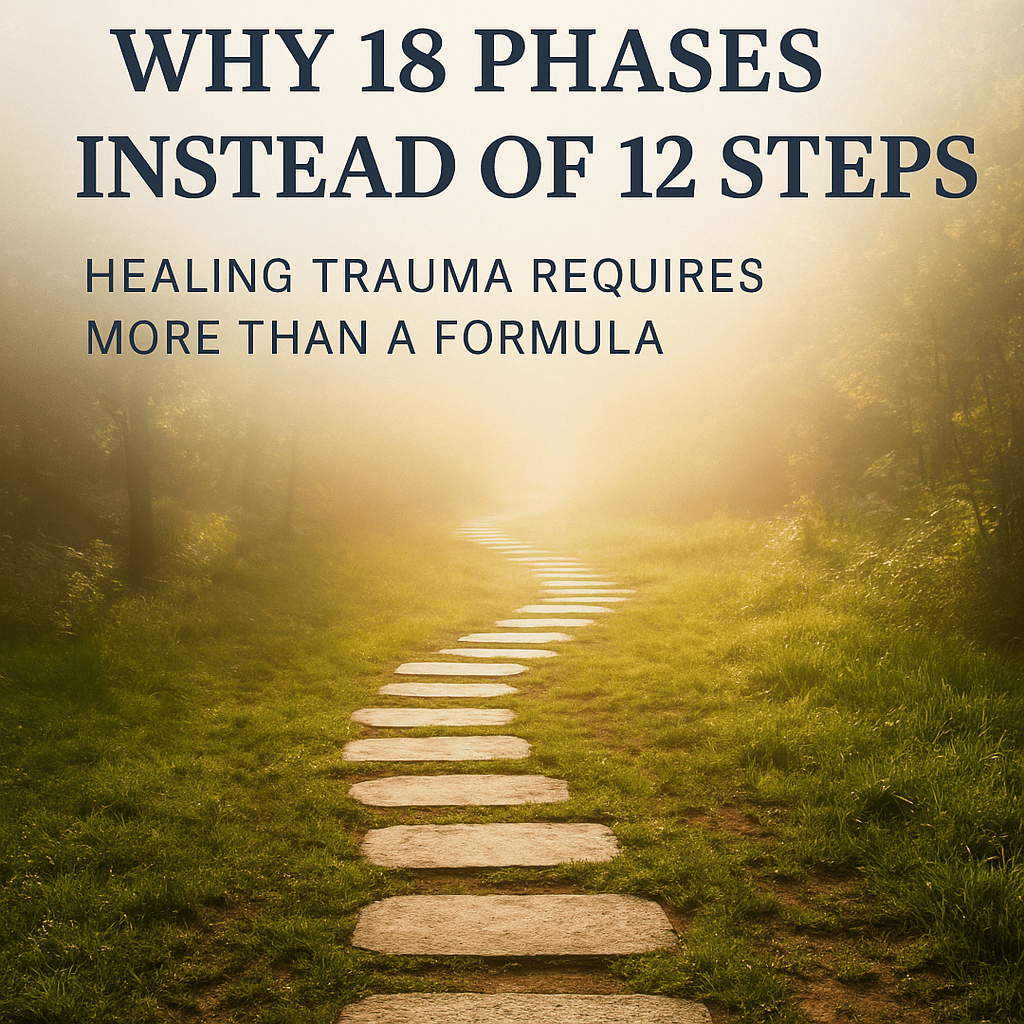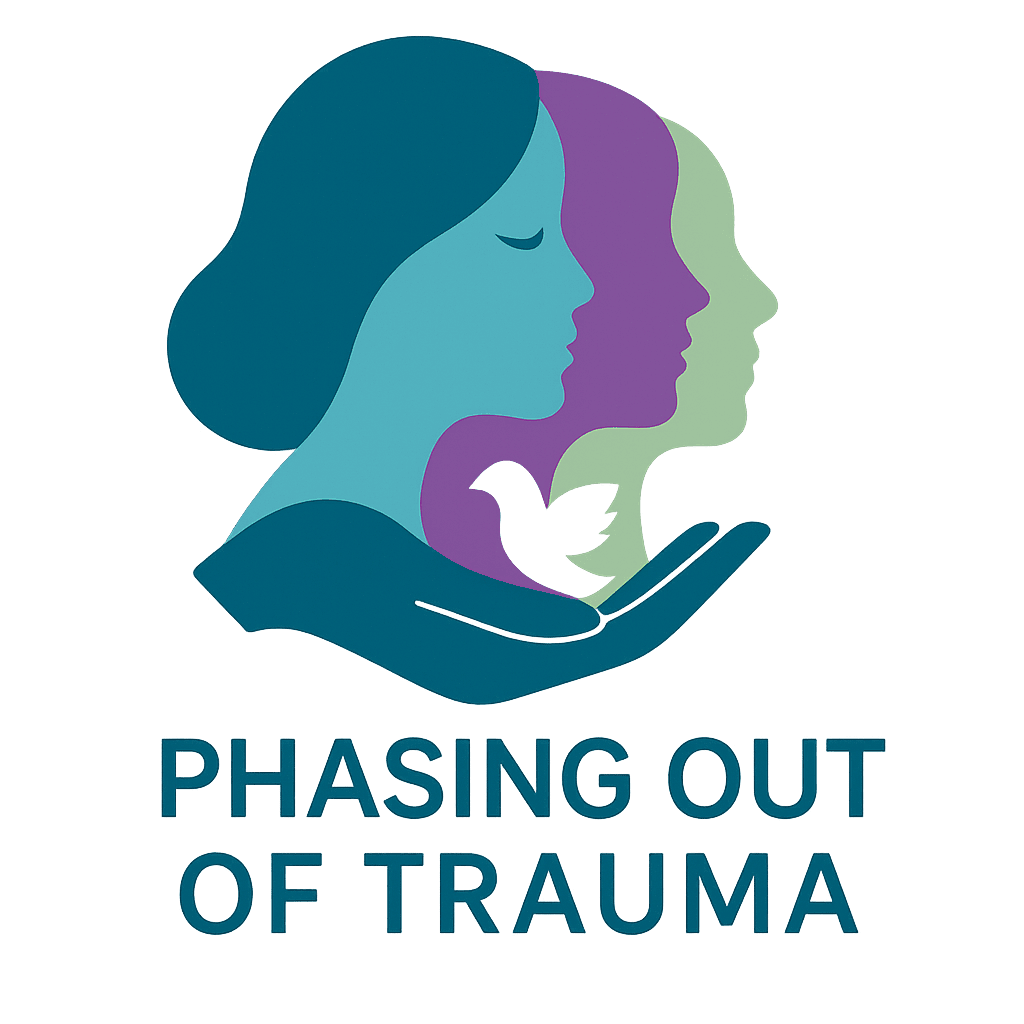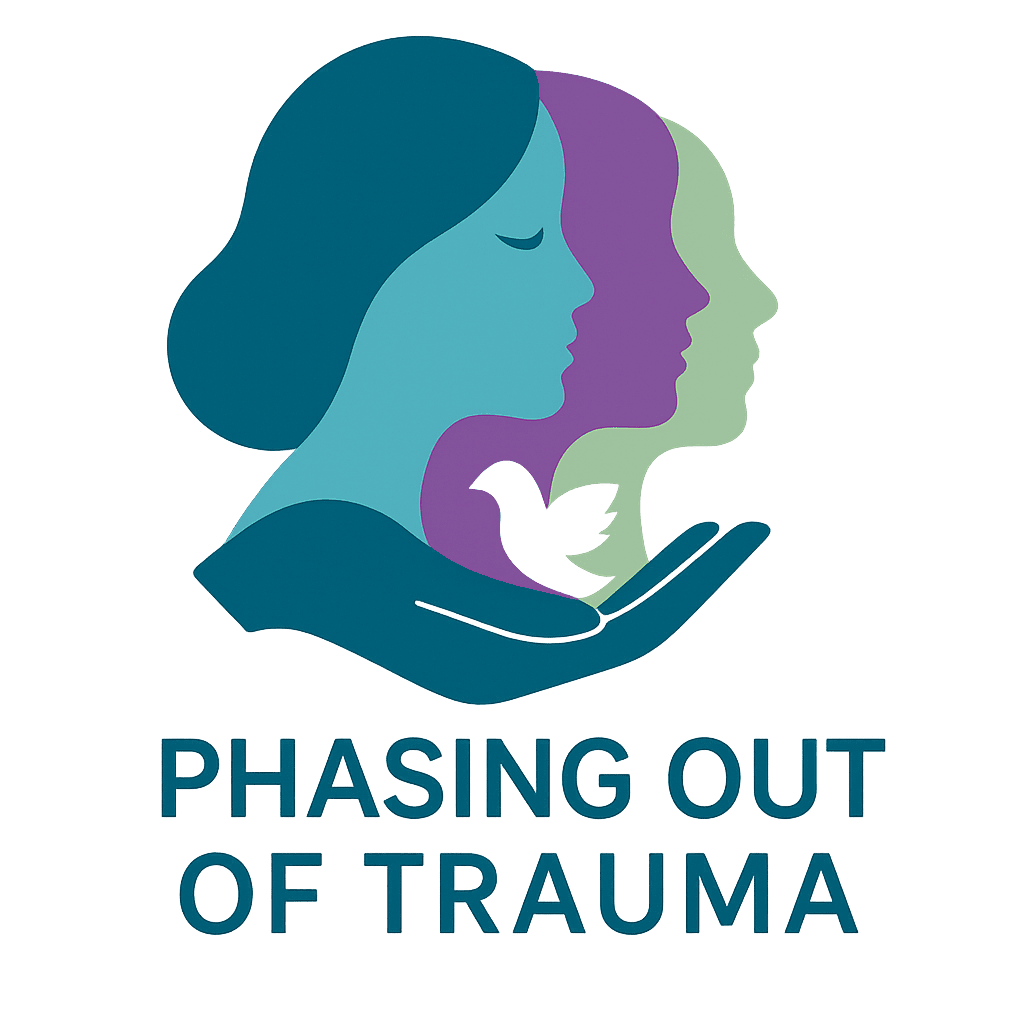
Healing Trauma Requires More Than a Formula
For many women, traditional recovery groups have offered a glimpse of hope but not always a home. The 12-Step model has transformed countless lives, especially for those battling addiction, codependency, and substance abuse. But for many women living with the effects of trauma—whether from abuse, loss, neglect, or other wounding experiences—the 12 Steps can feel like trying to fit a square peg into a round hole. While they may also be carrying wounds from addiction and codependency or be labeled as co-addicts because their partner is addicted, the meeting never touches the source of their experiences.
They may sit in a meeting, listen to powerful stories of addiction recovery, and still wonder quietly, “Where do I fit?”
At Phasing Out of Trauma, we believe women healing from trauma deserve a recovery process tailored to their unique needs—one that doesn’t reduce their pain to a pattern of choices or behavior, but honors the impact of what has happened to them.
The 12 Steps were designed for those whose lives had become unmanageable through addiction. Trauma, however, operates differently. It changes how our brains process safety, how our bodies hold stress, and how our spirits experience trust, intimacy, and faith.
Working a program designed for addiction can leave survivors of trauma feeling unseen. Trauma doesn’t always manifest as a craving—it manifests as hypervigilance, emotional shutdown, distrust, or disconnection. What’s needed is not simply abstinence from behavior, but restoration of safety, dignity, and belonging.
18 Phases: A Journey That Honors the Whole Person
Our 18-Phase model was built to integrate psychological insight with spiritual formation—because you can’t fully heal one without the other. The mind, body, and spirit all carry trauma; healing requires that all three be restored together.
Each phase walks a woman through a gradual process of healing, beginning with Sitting With Her Trauma and moving toward Moving Beyond Her Trauma. The phases build upon one another intentionally—each one giving language, perspective, and grace to the next.
This is not about working harder. It’s about being guided gently through a structured, Christ-centered process that allows the heart to catch up to what the mind believes.
Christ: Our Wounded Healer
We acknowledge God as our Higher Power, and we know Him by name—Jesus Christ, the Wounded Healer. He understands what it means to experience trauma, betrayal, loss, and suffering. He wept with Mary at Lazarus’s tomb, sweat blood in Gethsemane, and carried the weight of humanity’s pain to the cross.
He is not distant from our trauma—He entered it, transformed it, and redeems it still.
That is why Phasing Out of Trauma exists: to offer women a recovery process that holds both faith and psychology in equal measure. Healing is not complete if it restores our minds but not our souls, or our faith but not our sense of safety in our own bodies.
How You Can Begin the Journey
You don’t have to have it all figured out to begin.
Start by attending a General Meeting, where you can experience community and safety without pressure to share.
When you’re ready, explore the Phase Work Packets or join a Phase Work Cohort, where you’ll walk through each phase with others who understand.
For one-on-one support, consider our Mentorship Pathway, where trained mentors walk beside you through the process.
Healing takes time, intention, and grace—but you don’t have to do it alone.
Women healing from trauma don’t need to fit into someone else’s program. They need a process built for them—one that honors their pace, their story, and their faith.
At Phasing Out of Trauma, we believe recovery from trauma isn’t about managing behavior. It’s about reclaiming the wholeness that was always meant to be yours.

